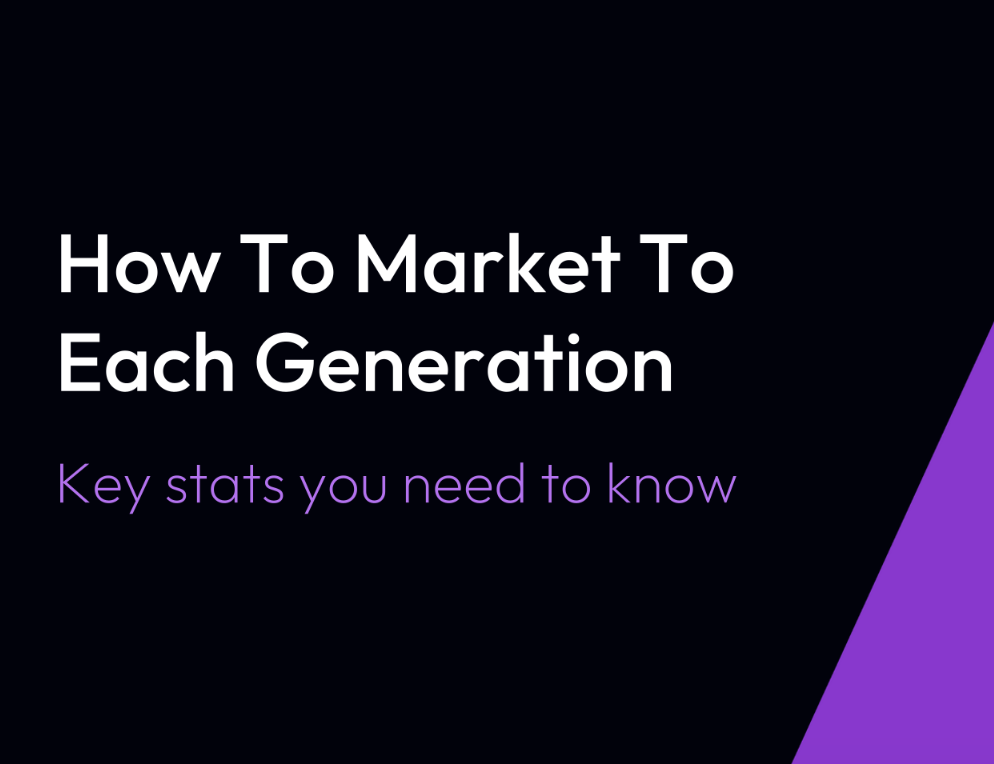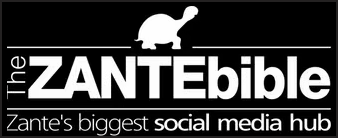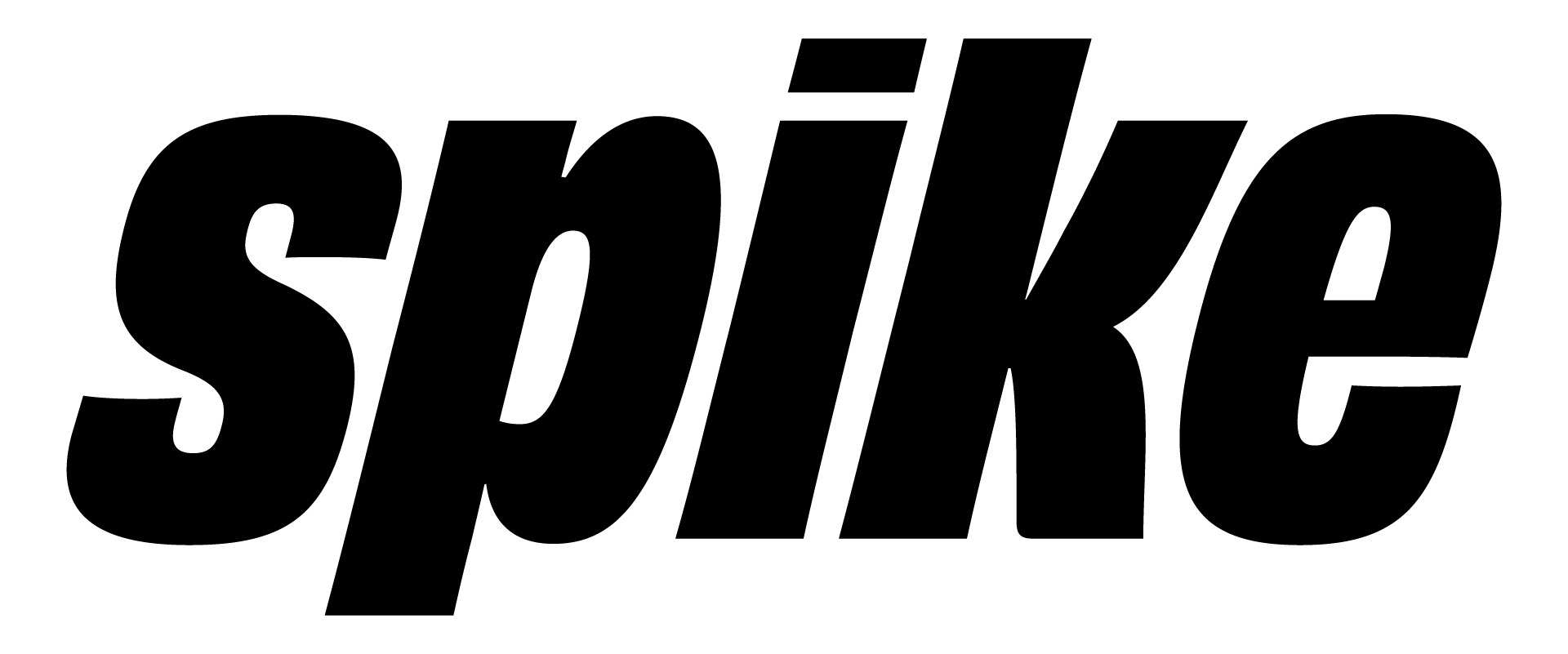
Understanding the unique shopping habits of each generation is crucial for all brands. Whether you are looking to appeal to individual consumer segments or hoping to appeal to some or all of them, it is necessary to understand each generation of consumers and their differences and similarities.
From Baby Boomers and Gen X to Millennials and Gen Z, each generation displays unique preferences and behaviours when it comes to researching products, social media, preferred payment methods, and valuing brand characteristics.
By understanding these generational variations, brands can tailor their strategies to effectively reach and engage each demographic, ensuring they meet the evolving expectations and preferences of today’s diverse consumer base.
Keep Reading to Learn About Each Generation:
- Gen Z
- Millennials
- Gen X
- Baby Boomers
Gen Z (born 1997 - 2012)
Born 1997 - 2012
Preferred Channels
When it comes to Gen Z’s preferred channels, it’s no shock that social media reigns supreme. With approximately 40% relying on mobile devices as a primary source for product discovery and research, it can seem obvious why, on average, there has been a decline of 25% in the use of Google for search, with Gen Z instead preferring to use social platforms such as TikTok to search for topics. This reflects the broader trend of relying on social media as a source of information.
When discovering new consumer packaged goods (CPG) products, such as those in the beauty, food and beverage, and over-the-counter (OTC) health categories, Gen Z predominantly credits social media as their initial source of information. TikTok comes out on top as the leading platform, with 35% of Gen Z users discovering new products there, compared to just 3% of Baby Boomers. Beyond that, Gen Z sees TikTok as the most trustworthy in protecting their consumer privacy. Instagram is the second most influential platform for product discovery among Gen Z consumers, highlighting the critical role of social media in shaping the purchasing behaviours of this generation
Purchase Influence and Drivers
Similarly to millennials, Gen Z are increasingly becoming aware of the numerous stressors in their life. In the past 12 months, 49% of Gen Z in the UK, 48% in the US, and 42% in Germany reported experiencing stress, depression, or anxiety. Because of this, there has been a trend among these younger generations to turn to online influencers for inspiration and support in managing wellness. In terms of commerce, influencers tend to hold a high level of trust with their followers and can, therefore, play a significant role in consumers purchasing decisions. In this case, endorsements would centre around self-help, health and fitness products.
Content creators offering advice and self-help content are particularly popular, with 26% of Gen Z favouring this genre and 27% liking health and fitness content.
Despite their ability to thrive in a digital landscape, Gen Z is more likely to purchase everyday essentials in-store, similar to other generations. Gen Z shoppers often favour deal days, with 61% considering Prime Day a better shopping opportunity on Amazon than Black Friday or Cyber Monday. Gen Z are also active participants in loyalty programs, with over three-quarters joining at least one program across beauty, food and beverage, and OTC health categories. The appeal of these programs has been heightened by inflation, leading 28% of Gen Z to join more programs for special offers or discounts. Early access to new products and the chance to win large prizes are the most valued loyalty program features for Gen Z. Additionally, 64% of Gen Z respondents find free shipping and coupons/discount codes the most sought-after perks, often providing their email addresses for these benefits.
Brand Values
Gen Z consumers are characterised by their strong commitment to sustainability, social responsibility, and authenticity. They are willing to pay more for sustainable products but do not believe sustainability should be confined to luxury or premium products. 46% assert that eco-friendliness should be accessible to all. This perspective highlights the importance of inclusive and authentic messaging from brands. Gen Z looks for transparent brands and quickly rejects organisations they feel are inauthentic regarding social issues. Successful brands, like Nike, resonate with this demographic through genuine corporate social responsibility initiatives, while others face backlash for perceived inauthenticity.
Environmental concerns are also at the forefront of Gen Z, who actively seek products and brands that minimise ecological impact. This is shown by their support for second-hand markets and sustainable household brands. Social justice issues, such as racial equality, are also fundamental to them. As such, they expect brands to take clear, consistent stands on these matters. Brands that fail to demonstrate a real commitment to these causes risk losing the support of Gen Z consumers, making it essential for businesses to integrate sustainability and social responsibility into their core practices authentically.
Preferred Payment Methods
More than half (52%) of Gen Z consumers prefer using a debit card for purchases, with only 19% favouring credit cards. This preference is driven by the need to avoid overspending and manage their finances responsibly.
Gen Z has shown keen interest in digital wallets, with around 57% using digital wallets in 2021, a significantly increased number from previous years. Gen Z trusts the security and efficiency of digital wallets more than older generations, with 48% expressing confidence in this payment method compared to 35% of Baby Boomers. Popular digital wallets among Gen Z include Apple Pay, Google Pay, and Venmo, with Venmo being used by 28% of this age group.
Buy now pay later (BNPL) schemes have also proved popular with Gen Z, with three-quarters of BNPL users in the U.S. being Gen Z or millennials. BNPL allows consumers to pay for a product in instalments and spread the cost rather than paying one lump sum. This method allows for flexible payment plans, helping consumers manage their cash flow better. BNPL also encourages purchases, with 76% of young BNPL users agreeing that pay-over-time options motivate them to buy.
Payment options are crucial to capturing Gen Z's loyalty. If their preferred payment method is unavailable, they are likelier to abandon a purchase rather than switch to an alternative method. This highlights the importance of businesses offering a variety of payment options to capture this demographic's spending power effectively.
Actionable Insights
- Focus on mobile and social media: Prioritise TikTok and Instagram for product discovery and marketing.
- Enhance digital payment options: Offer a variety of digital wallets and BNPL options to cater to Gen Z preferences.
- Emphasise authentic and sustainable practices: Showcase genuine commitment to sustainability and social issues in marketing messages.
- Leverage influencers and loyalty programs: Use influencers for product endorsements and create engaging loyalty programs offering early access and exclusive rewards.
Millennials
Born 1981 - 1996
Preferred Channels
Millennials are mobile-first shoppers who extensively use social media platforms like Instagram and TikTok for product discovery and research. With 39% of Millennials accessing the internet solely through their mobile phones, their online activities are deeply connected to their mobile devices. About 71% of Millennials use Instagram, and 40% use TikTok, making these platforms crucial for brands aiming to capture this demographic’s attention. Millennials spend considerable time on social media, engaging with brands, following influencers, and discovering new products on channels like Instagram, Facebook, and YouTube.
Purchase Influence and Drivers
As touched upon when discussing Gen Z, Millennials are also looking for relief from the stress and anxiety of everyday life. They, too, rely on influencers and turn to them looking for methods to cope. Compared to older generations, 33% of millennials favour advice and self-help content, and 29% prefer health and fitness content.
This trend is evident in the beauty industry, where self-care has replaced old-school glamour among those under 40. Beauty routines are now seen as a way to unwind from daily stress, with younger generations more likely to visit wellness and spa facilities as part of their self-care. Skin cycling, which involves a minimalist four-night skincare routine, is gaining global popularity and reflects a broader societal shift towards holistic well-being. This trend, popularised on platforms like TikTok and Douyin, is embraced more by Gen Z and Millennials than by Gen X and Baby Boomers.
Brand Values
Millennials prioritise authenticity, sustainability, and social responsibility in the brands they support. Authenticity is crucial, with 88% desiring genuine experiences and transparent practices from brands. They tend to prefer brands that are straightforward about their operations and honest in their communications. Like Gen Z, sustainability is also a significant concern, with 70% more likely to choose brands that donate to causes they care about and 81% expecting companies to declare their corporate citizenship publicly.
Millennials also value community engagement, with 62% more likely to become loyal customers if a brand interacts with them on social media. Personalised experiences and loyalty programs play an essential role, influencing 78% of Millennials to purchase from brands offering such programs, and 65% noting that promotions and loyalty programs significantly impact their brand loyalty.
With their heavy reliance on technology, brands that choose to integrate innovative approaches like augmented reality, targeted ads, and geo-fencing are more likely to capture Millennials' attention, as they prefer consuming content through streaming services and social media platforms.
Preferred Payment Methods
In terms of payment methods, Millennials are open to using alternative options like digital wallets and BNPL services. Despite being the generation most likely to have a credit card, with 65% reporting ownership, they use these cards to maximise travel rewards and retail discounts, combining lifestyle aspirations with financial know-how. Digital wallets like Apple Pay and Google Pay are popular among Millennials due to their convenience and security. On top of this, BNPL services are widely used by Millennials, allowing them to manage their cash flow better and make larger purchases more accessible.
Actionable Insights
- Capitalise on mobile and social media: Engage with Millennials through Instagram and TikTok; offer mobile-friendly shopping experiences.
- Promote digital payment flexibility: Incorporate credit card rewards and digital wallet options.
- Highlight authenticity and corporate responsibility: Showcase transparent practices and support for social causes.
- Leverage influencers and loyalty programs: Utilise influencer endorsements and create engaging loyalty programs with personalisation and rewards.
Gen X
Born 1965 - 1980
Preferred Channels
Gen X (aged 44-59) show some differences from their younger counterparts regarding their preferred communication channels. They prefer using Google more frequently across all categories, indicating a strong tendency towards traditional search engines for information gathering. While they engage with social media, they are less influenced by platforms like TikTok and Instagram than younger generations. This is evident as only 18% of Gen X have purchased directly on a social media app. This shows a preference for in-app shops for product discovery. Although they use tech and are regular users of mobile devices, Gen X are not predominantly mobile-first shoppers like Millennials and Gen Z. They still value real-life shopping experiences even when they discover products online.
Purchase Influence and Drivers
Price and product quality are the top factors driving purchase decisions among Generation X. They also prioritise good customer service and reliable product reviews or testimonials. A mix of online and offline shopping often appeals to this generation, as they appreciate the convenience of online shopping but still value the experience of shopping in physical stores.
Brand Values
Regarding brand values, Generation X values brands they can trust with their data and those that treat their employees well. Like the younger generations, they often look for authenticity and sustainability in brands and expect companies to take a stance on social issues like climate change, affordable healthcare, racial justice, and income inequality. Gen X also tend to support small businesses and value diversity and inclusion, although not as strongly as Millennials and Gen Z.
Preferred Payment Methods
Generation X continues to use traditional payment methods like credit and debit cards. They are gradually adopting alternative payment methods, including digital wallets (such as Apple Pay and Google Pay) and BNPL options. However, their adoption rate is catching on less than that of younger generations.
Actionable Insights
- Focus on traditional search and customer service: Use Google Ads and focus on quality customer service.
- Gradual integration of digital payments: Offer digital wallet options but maintain conventional payment methods.
- Emphasise trust and authenticity: Highlight corporate responsibility and employee treatment.
- Balance online and In-store experience: Provide a seamless shopping experience across both channels.
Baby Boomers
Born 1946 - 1964
Preferred Channels
Baby Boomers are often a forgotten audience, but if tapped into correctly, they can be valuable customers. They frequently first discover products on television, especially in categories like beauty, food and beverage, and over-the-counter (OTC) health products.
When it comes to discovering new products online, Facebook is their most popular channel, with 25% using it compared to 10% for Gen Z. Despite their use of mobile devices, Baby Boomers are not primarily mobile-first shoppers and do not extensively use platforms like TikTok and Instagram for product discovery and research.
Purchase Influence and Drivers
When it comes to purchase influencers and drivers, Baby Boomers prioritise price, especially in current times with the cost of living crisis. 60% have reported noticeable changes in their spending habits to adopt more cautious choices and often are persuaded to purchase if they deem something value for money. They also value good customer service, the ability to see and feel products in-store, and detailed product information. While they tend to prefer in-store shopping, they are comfortable shopping online if the retailer has a strong in-store presence.
Brand Values
Baby Boomers value authenticity, quality, and tradition. As seen throughout each generation, they are conscious of sustainability and respond well to purpose-driven brand messages. Brands that successfully communicate their commitment to sustainability and social responsibility can then begin to resonate with this generation.
They often see the appeal of exclusivity in marketing, making this an effective strategy with Baby Boomers. Matt Fier, VP of retention marketing at QDL Agency, explains that they appreciate the perceived value and unique offerings.
“Using exclusivity is a great way to encourage the buy, especially with older generations. Many of us still think of ‘older’ people as the ‘silent generation,’ raised by practical, low-spending, Great Depression-era parents. But today, they’re baby boomers. It all comes back to: What’s your ‘why’? Show your value, build perceived value, and build exclusivity.”
Preferred Payment Methods
Unsurprisingly, traditional payment methods such as cash, credit cards, and debit cards are the preferred methods of payment for Baby Boomers. A study by Worldpay found that 71% of Baby Boomers prefer these methods over newer alternatives like contactless payment and digital wallets. They are, however, open to online shopping and using mobile apps, provided that they feel these payment methods offer value and convenience.
Actionable Insights
- Leverage traditional media and Facebook: Use television and Facebook for product promotion.
- Stick to traditional payment methods: Focus on cash, credit, and debit card options.
- Highlight authenticity and exclusivity: Emphasise product quality, tradition, and exclusivity in marketing.
- Provide strong In-store and online service: Ensure excellent customer service both online and in physical stores.







